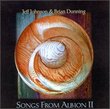| All Artists: Beethoven, Toscanini, Nyp Title: Beethoven: Symphony No 7; Haydn: Symphony No. 101; Mendelssohn: Scherzo from "A Midsummer Night's Dream" Members Wishing: 0 Total Copies: 0 Label: RCA Release Date: 6/9/1992 Genre: Classical Styles: Historical Periods, Classical (c.1770-1830), Symphonies Number of Discs: 1 SwapaCD Credits: 1 UPC: 090266031627 |
Search - Beethoven, Toscanini, Nyp :: Beethoven: Symphony No 7; Haydn: Symphony No. 101; Mendelssohn: Scherzo from "A Midsummer Night's Dream"
 | Beethoven, Toscanini, Nyp Beethoven: Symphony No 7; Haydn: Symphony No. 101; Mendelssohn: Scherzo from "A Midsummer Night's Dream" Genre: Classical
Toscanini's justly famous 1936 Beethoven Seventh was a bestseller in its day, and its formidable virtues continue to hold their own in the digital age. The New York Philharmonic's unanimity of ensemble, rhythmic acuity,... more » |
CD DetailsSynopsis
Amazon.com essential recording Toscanini's justly famous 1936 Beethoven Seventh was a bestseller in its day, and its formidable virtues continue to hold their own in the digital age. The New York Philharmonic's unanimity of ensemble, rhythmic acuity, tonal allure, and sheer power attest to Toscanini's exacting standards. The present transfer reveals a more massive, yet flexible orchestral image, built from the bottom up, that will surprise listeners accustomed to Toscanini's leaner, more astringent later NBC Beethoven recordings. These qualities apply as well to the Maestro's 1929 Philharmonic Haydn "Clock" Symphony and Mendelssohn Midsummer Night's Dream Scherzo. All of the Maestro's New York Philharmonic recordings are important, but this is the one with which to start your collection. --Jed Distler Similar CDs
|
CD ReviewsThe Touchstone of Performances of the Seventh! 09/17/1998 (5 out of 5 stars) "At last, an even finer musical experience than can be obtained by auditioning a mint copy of the 78s, which I once owned.This incandescent 1936 reading comes from a recording session at Carnegie Hall during the Maestro's last season with the Philharmonic- Symphony Orchestra of New York. Robert C. Marsh, in his admirable book of reviews of the Toscanini repertoire, remarked that this may have been the greatest classical music recording event of all time! Such hyperbole aside, the performance preserved here is of such unassailable classical honesty, and has such incomparable polish and sense of musical truth, that -- as one might assume -- all further attempts by the Maestro would never measure up (he did the work nearly a dozen times after this waxing, and recorded it again onto magnetic tape in a poor, overdriven 1951 account.)Only the Franklin Mint LP transfer had the body and clarity of this present CD release, rivalling the original 78s. Made with a special technique using two cutting machines in long, extended takes, the shellac disks featured many seconds of silent grooves while the engineer synchronized his "switch over" to preserve a complete performance (of course, these disk pauses are edited out.) Thus, there is no hint of the "start and stop" effect present on many old 78 rpm recordings, where certain conductors endulged in ritards at the ends of sides, or had difficulty in resuming a movement at a disk break. One simply experiences here a continuous performance with Toscanini's incomparable sense of musical line and architecture.During the conductor's lifetime, his tempo for the second movement was controversial, as many of his predecessors had adopted an almost funereal pace. The "walking tempo" chosen by Toscanini is now considered entirely appropriate, and has influenced most interpreters to this present day. The pacing for the remaining movements blends energy with a sense of natural flow, so that one never experiences any feelings of strain or contrivance (it might be noted that Leopold Stokowski directing an almost equally- convincing account of the Seventh with his Philadelphia Orchestra in 1927, now available in an excellent transfer on Biddulph. Not until the appearance of the superb 1950 performance by Furtwaengler and the VPO was there a Beethoven A-Major symphony reading to rival these two Victor phonographic classics.)No attempts at fancy noise reduction have been made by the wise engineers who produced this superb issue. The equalization is correct, and there is full body and sheen to the sound of the orchestra, though highs above about 5 to 6 kHz were not engraved. The low frequency response is rich and deep, so that the growl of the double basses in the finale is dramatic and impressive. I measured a true electrical dynamic range (using a special metering system) at nearly 40 dB: this is about the absolute limit of a good 78 mastering. If any "monitoring" of audio peak levels was done during the recording session, it was accomplished by careful manual adjustments: there is no "squashing" sound of electronic limiters, and the sforzandi and climaxes are aggressive and powerful.RCA now redresses past sins: the old Camden LP issue of the late fifties was nasty and thin, with a filtered lack of realism. I am delighted to report that here on this new CD transfer the producers eschewed fake stereo, added ambience, or rechannelling.The companion works are not nearly as well recorded: the 1929 Haydn and Mendelssohn are very dim in comparison, but have a natural acoustical balance from the Carnegie Hall mike pickup that is better than the typical Studio 8-H claustrophobia of the later Toscanini broadcasts. The Haydn "Clock" symphony is more relaxed and sunny than the 1946 revisitation by the Maestro (though the constant shellac hiss is a bit fatiguing); the Mendelssohn Scherzo is a tour de force of virtuosity at an ideal tempo, compared to the slower 1926 PSNY recording, or the slightly faster 1947 NBC version.Truly a Great Recording of All Time, worthy of the finest rating. BE CERTAIN you purchase this and NOT any of the "rip off" unauthorized dubbings, which cannot possibly equal this honest transfer of recordings that were arguably the finest versions up to the microgroove era." Toscanini with the New York Philharmonic Robert E. Nylund | Ft. Wayne, Indiana United States | 01/20/2006 (4 out of 5 stars) "Arturo Toscanini (1867-1957) conducted the New York Philharmonic from 1926 to 1936 and later returned to make guest appearances until 1945. He resumed making commercial recordings, too, after having made a series of acoustical recordings in 1920 and 1921 with the Scala Orchestra for the Victor Talking Machine Company. He had not been terribly happy with the results of the acoustical process, which forced the musicians to crowd around a horn, because of its limited frequency range. The advent of electrical recording, which was finally perfected in early 1925, enabled a full orchestra to be recorded with much greater fidelity (as high as 10,000 cycles per second). Using one carbon microphone, it was possible to achieve amazing results, compared to the limited possibilities with the old acoustical process. Toscanini made his first electrical recordings in 1926 with the New York Philharmonic for the Brunswick company. Using a large room in Carnegie Hall, the orchestra recorded the Scherzo and Nocturne from Felix Mendelssohn's incidental music for the Shakespeare comedy "A Midsummer Night's Dream." These recordings were later included in the RCA Victor compact disc set of the complete New York Philharmonic recordings conducted by Toscanini. This compact disc included three outstanding examples of Toscanini's New York Philharmonic recordings for the Victor company, made between 1929 and 1936. The results were quite good, even if Toscanini hated having to stop every four to five minutes while the engineers changed the master for the 78-rpm discs. Despite still limited fidelity, the recordings benefited from being recorded on the stage of Carnegie Hall, longtime home to the Philharmonic (until Philharmonic Hall was completed in 1962). His recording of Beethoven's seventh symphony remains an amazing document. There is a great flexibility and variety in the performance. It was probably never excelled in his later performances with the NBC Symphony Orchestra, even RCA achieved higher fidelity in the commercial recording made in the early 1950's. It is a very exciting and powerful performance. One is particularly moved by the second movement, with its deeply tragic and emotional funeral march. The scherzo of the third movement seldom was played with more energy, while the first and fourth movements have an intensity rarely surpassed by other conductors and other orchestras. Haydn's "Symphony No. 101," is also called "The Clock" because of its mechanical-sounding tune in the second movement. Toscanini was very selective in conducting a relatively few of the composer's 100-plus symphonies. He clearly enjoyed this work and later included it in NBC broadcast concerts, finally making a commercial recording in one of the NBC studios (not the spacious 8-H) that had particularly dull acoustics. This performance is energetic, enthusiastic, and highly enjoyable. The third movement is played with appropriate intensity (somewhat faster) because Haydn tended to use an Austrian folk dance rather than the traditional minuet employed by most composers of the time. This performance of the Scherzo from Mendelssohn's "A Midsummer Night's Dream" is more precise and more delightful than the 1926 recording for Brunswick. It benefits, of course, from somewhat better sound at the hands of the RCA engineers. These are indeed a good sampling of Toscanini's work with the New York Philharmonic, even if the sound is not up to his later commercial recordings with the NBC Symphony. " Toscanini at his best Hermes Camacho | Boulder, CO | 08/10/2001 (5 out of 5 stars) "There is no question of the absolute power and control Toscanini had over every orchestra he directed. His extreme dictatorship, musicianship, intense personality, and servitude to the composer's score made him the greatest Maestro, both past and present, and revolutionized the way present maestri conduct. If you are a fan of Beethoven's Seventh Symphony, this is the recording to own. Obviously the sound is not great, but it is very good and easy to listen to. Toscanini's interpretation was probably the basis of the majority of recordings after him, as it was the one that followed Beethoven's tempos the closest, if not exactly (particularly the 2nd movement "walking tempo" Allegretto, and the famous correct tempo he took in the trio of the third movment). Here he had a virtuoso ensemble of players. The unanimity of the attacks, the warmth and weight of the sound, the intensity in which they played makes this a remarkable recording. The fourth movement is EXACTLY the tempo Beethoven indicated and the coda is absolutely triumphant and hair-raising. A word on the Mendelssohn...much more fleet and virtuosic than the 1926 version, Toscanini truely does wonders to this classic score. It's magical in a way that cannot be described and you can almost see pictures in your mind of the characters from Shakespeare's play. This is a brilliant recording."
|

 Track Listings (9) - Disc #1
Track Listings (9) - Disc #1

